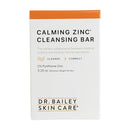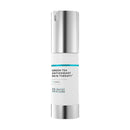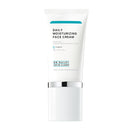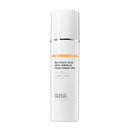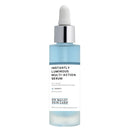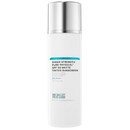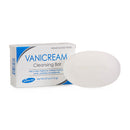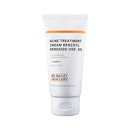Chemotherapy Port Scars

Chemotherapy port scars are one of the souvenirs of surviving cancer chemotherapy for many of us. When you get a cancer diagnosis, your future chemotherapy port scar is the last things on your mind. It wasn't for me. I’ve seen so many old port scars in my years of dermatology practice and I want to tell you it will matter down the line WHEN you survive.
Chemo Port Scars
What can you do to help hide your port scar?
Ask the doctor placing the port to make some changes to how the scar is fashioned when your port is placed. This can give you a scar that blends nicely with your skin as you go from cancer patient to cancer survivor.

I know a lot about port scars because I’m a BRCA breast cancer survivor who is also a dermatologist. - Dr. Cynthia Bailey
When my oncologist told me that I needed a chemo port as part of cancer treatment, I was in shock for many reasons. Port placement was the first procedure followed by 4 months of hardcore chemo and many surgeries. I wasn’t sure I was going to survive the cancer but IF I DID SURVIVE, I knew that I did not want an ugly horizontal scar across my décolleté to remind me of cancer forever. I intervened by talking to my doctor about the maximal skin tension lines during my port placement procedure.
What are the Maximal Skin Tension Lines, and Why They Matter for Your Chemo Port Scar?

I went to my port placement appointment ready to ask the doctor to orient the scar in the skin lines that will form my future chest wrinkles. Maximal Skin Tension Lines are well known to dermatologists and plastic surgeons, but not to radiologists who are often the doctors that place ports. The lines go by a variety of names. I use the name 'Maximal Skin Tension Lines'. They are also known as Langer’s Lines.
Every person's lines vary because they are determined by movement of your underlying muscles over the course of your lifetime.
Maximal Skin Tension Lines are also known as Langer's Lines.
Surgical scars that are fashioned parallel to the Maximal Skin Tension lines will look better and feel better over the years. Following the surgical rule of orienting a scar parallel to these lines is important to getting the best cosmetic result. The scar will become more comfortable, because the skin tension vectors won’t pull on the scar as you move and the skin sags with age. This will lower the chance of the scar being inflamed, irritated, or thickened into a keloid.
How to Talk to Your Doctor About the Scar from Your Port Placement for Chemotherapy Treatments.
My port was placed by an interventional radiologist who I knew would do a great job of getting the port into the correct vessel while protecting me from infection. Because I had never seen a port scar oriented in the Maximal Skin Tension Lines in my community, I knew I was going to have to speak up. I brought a beautiful dress that I had purchased right before my cancer diagnosis to my appointment. It had a flattering wide scoop neckline. I wanted the scar well away from that opening!
I asked the radiologist to do 2 things for my port placement that would have a big impact on my future scar:
- Please orient the scar in the maximal skin tension lines and,
- Please do not put the scar in the dress' scoop neckline.
He laughed (thank goodness)! He said, “I get it -- the no-fly zone”. Then I described how to find the maximal skin tension lines on my chest. It was actually a new concept to him!
Dermatologist's port removal scar results

I also wanted my port scar to be placed under the bra strap. His concern was the bra would rub the port while the port was in place. I assured him I would watch for that and take care. My chemo port never rubbed on my bra for the entire 6 months that I had the port buried under my skin.
You can see in the second photo how I had the scar placed and how it looks now. These are my maximal skin tension lines. In this location, the lines are typically oriented more up and down.

How to fix brown and red marks from your port removal scar
Brown and red discoloration of a port scar is common. The port is repeatedly accessed in the chemo suite, for blood tests and IV infusions. It is handy but this is traumatic for the skin and it will gradually create a brown discoloration from the trauma of being stuck over and over again with the port access needles.
The brown and red discoloration of your port scar can be treated by IPL.
Intense Pulsed Light, also called BBL or Broad Banned Light, is like a laser treatment though technically different. Wavelengths of light are flashed on the discoloration and the energy is transferred to the discoloration and breaks it up. This can be done once your port has removed and the skin has healed for a number of months. I had my IPL treatment done about 6 months after my port was removed.
How do you treat lumpiness and thickening of your port scar once your port is removed?
The area of your port can develop a lumpy scar called a hypertrophic scar. A keloid scar is even a possible port scar complication.
Any lumpiness or thickening of the scar can be lessened with erbium ablative fractionated laser (Profractional Laser). I’ve had all these treatments and my scar looks pretty darn good. I’m 7 years out from cancer, and the scar never bothers me. It is now almost invisible so even if it shows in a garment nobody really notices it.
Two important steps to get a port scar that is not big, dark and noticeable.
- If you are facing a port placement, the most important aspect of its future scar appearance is to consider how your maximal skin tension lines are oriented.
- If your port area does not look good after your port is removed, see your dermatologist about laser or light treatments to lessen the appearance of cancer wear and tear.

Here is what my port and port scar looked like on the morning of my double mastectomy. This is after 4 months of ACT dose dense chemo which is tough chemo given every 2 weeks and includes a blood test. Thus, my port was accessed with needles at least twice every 2 weeks. Note how I had the radiologist orient the scar. The port was placed medially (towards the middle of my chest from the incision).
How do you find your Maximal Skin Tension Lines or Langer's Lines on your chest for your port scar placement?
Look at this diagram of maximal skin tension lines and then look at your own skin. Squeeze your skin to pinch it towards a line and see how your skin wrinkles and crinkles in the direction of the lines. Ports are usually placed in the upper chest to the side near your arm. See the red lines

I have drawn there? My port was placed to the side of my upper chest right under the arm strap of my bra. I wanted the line oriented up and down in line with the bra strap and well out of my decollate. I'm really pleased with my scar 7 years later! If you are researching the subject, know there is a lot of confusion between the terms maximal skin tension lines, relaxed skin tension lines, and Langer's Lines.
During treatment for breast cancer I developed my dermatologist's Chemotherapy Skin Care Kit
I had a lot of time on chemo to watch my skin. I was also very active on the cancer forums and heard a lot about the side effects that many people were going through with their own chemotherapy. Of course, I had also treated many chemo patients in my dermatology practice over my career. I could do something to help prevent and relieve suffering from skin side effects and I put my 30+ years of dermatology experience to the cause and developed my Chemotherapy Skin Care Kit.
I donate all the profits from each sale of my Chemotherapy Skin Care Kit to cancer advocacy and research organization FORCE.
My Chemo Skin Care Kit has the key products we need to care for our skin during chemo. Good skin care helps prevent and sooth the most common chemo-related skin rashes and nail problems.
Click here to learn more about my Chemotherapy Skin Care Kit.


